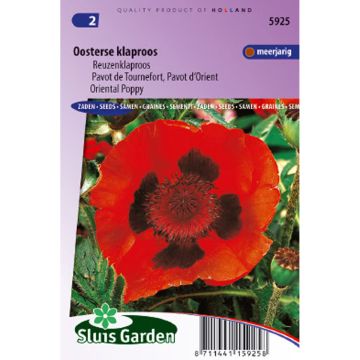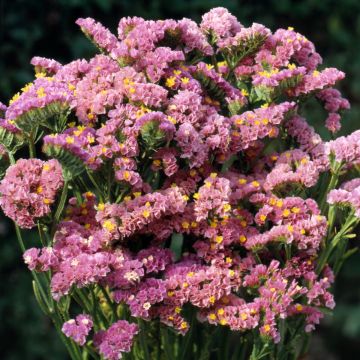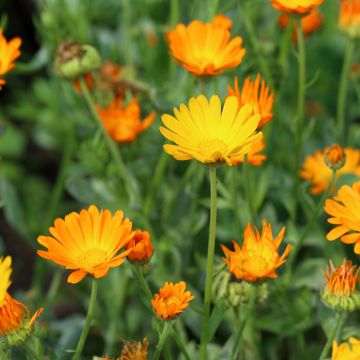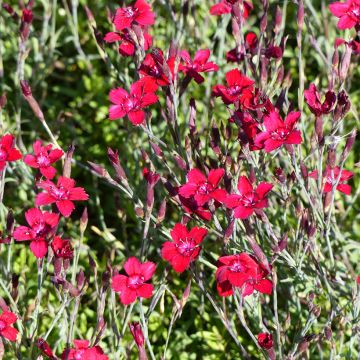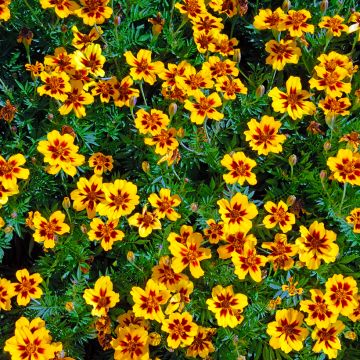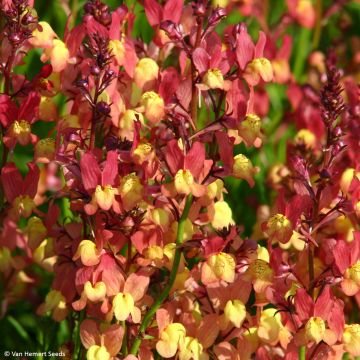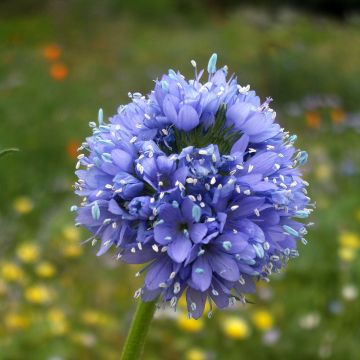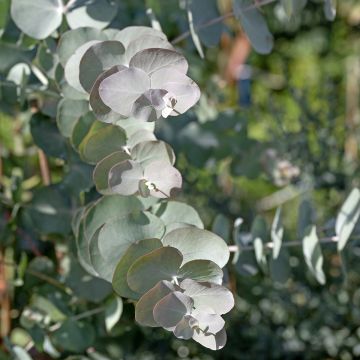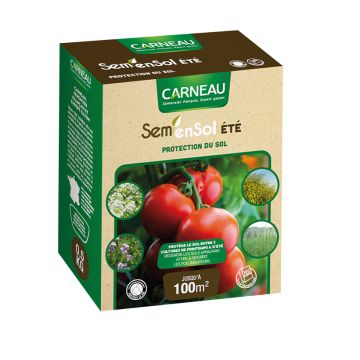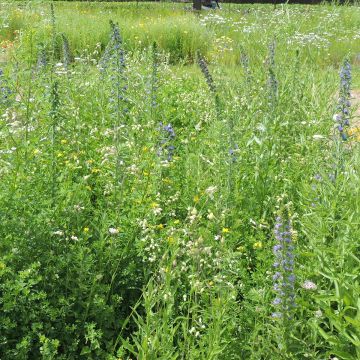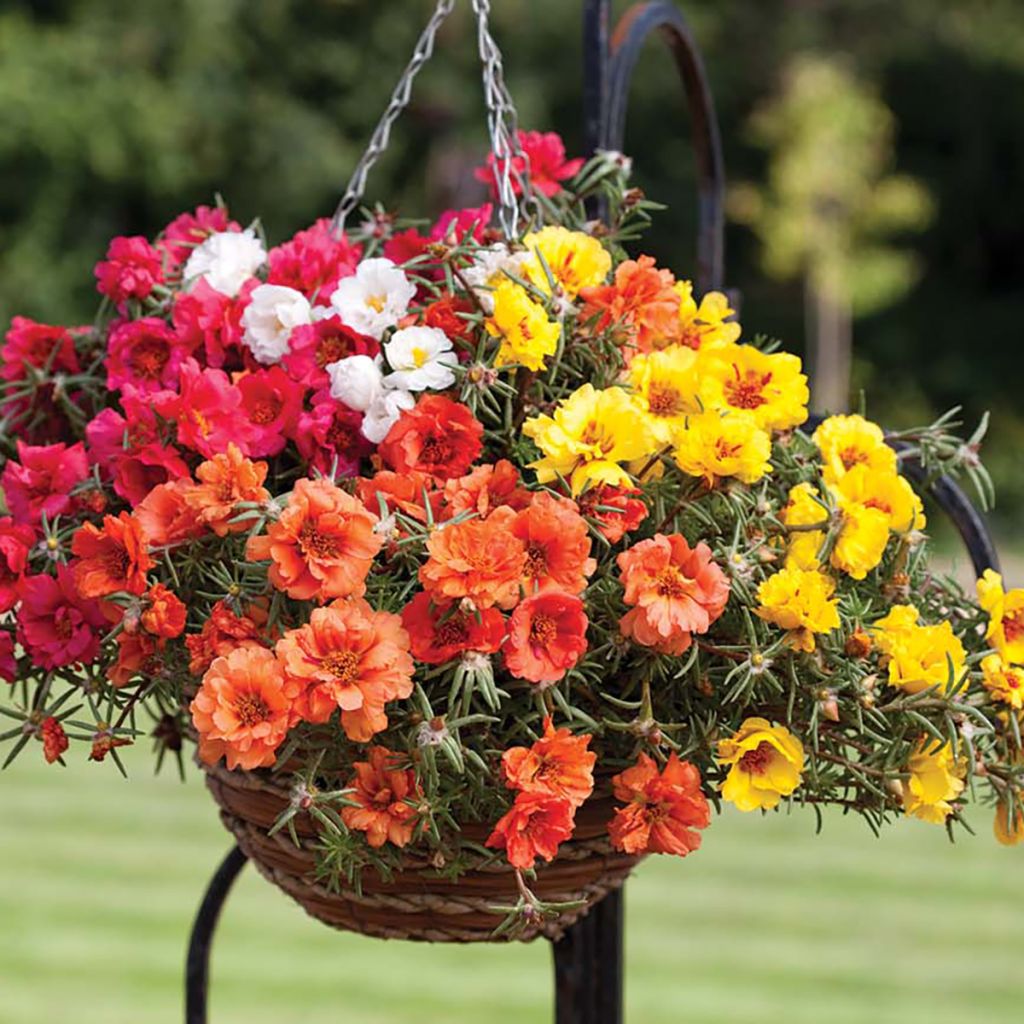

Portulaca grandiflora Lazy Daze Mix - seeds
Portulaca grandiflora Lazy Daze Mix - seeds
Portulaca grandiflora Lazy Daze Mix
rose moss
This item cannot be shipped to the selected country
Dispatch by letter from €3.90
More information
Schedule delivery date,
and select date in basket
This plant carries a 6 months recovery warranty
More information
We guarantee the quality of our plants for a full growing cycle, and will replace at our expense any plant that fails to recover under normal climatic and planting conditions.
Seed-only orders are dispatched by sealed envelope. The delivery charge for seed-only orders is €3.90.
Does this plant fit my garden?
Set up your Plantfit profile →
Description
Large-flowered purslane or Portulaca grandiflora 'Lady Daze Mix' is a compact and dense selection that produces large double flowers in a superb mix of colours. It is an annual plant that loves heat and blooms all summer in sunny rockeries, even in poor, dry, and rocky soil. This variety is also perfect in hanging baskets or pots on the terrace.
The double-flowered purslane, from the portulacaceae family, is widespread in the semi-desert areas of Argentina, southern Brazil, and Uruguay. This annual plant is one of the few that is succulent. The 'Lady Daze Mix' selection produces large 100% double flowers in a range of colours including white, yellow, orange, dark pink, and red. The plants form small, spreading, and dense clumps, no more than 22 cm high and 30 cm in spread. Their green or reddish stems bear small, elongated, lanceolate, fleshy, green leaves. Flowering occurs from late spring until September. The large 4-5 cm diameter flowers open in the sun. They are composed of numerous crinkled silk-like petals in vibrant and varied colours. They need full sun and well-drained soil to flourish.
Plant the 'Lady Daze Mix' above walls, in rockeries, borders, or containers. In large groups or small touches, this undemanding and cheerful annual will enliven any sunny corner without requiring much attention. This creeping plant makes a good ground cover, planted in borders and flower bed with drought-tolerant plants like thyme, Californian poppies, and sedums.
Report an error about the product description
Flowering
Foliage
Plant habit
Botanical data
Portulaca
grandiflora
Lazy Daze Mix
Portulacaceae
rose moss
Cultivar or hybrid
Other Flower seeds by variety
Planting and care
Sow the Lady Daze Mix from February to May in a tray. Use good quality soil sifted on the surface to bind the seed to its substrate. Before sowing, lightly press the soil with a board. Sow your seeds by broadcasting. Cover the seeds by sprinkling soil or vermiculite on top, lightly press and water generously with a fine rose. Place your tray in the light, without direct sunlight, at a temperature of 18°C to 21°C. Lower the temperature at night to 16°C to create a beneficial alternation for germination.
The seeds will take 7 to 14 days to germinate. As soon as the plants are manageable, transplant them into 7 cm pots. Keep the soil moist, but not excessively during growth. Then, 15 days before their final placement, start gradually acclimatising them to a temperature of 15°C.
By the end of May or early June, the temperature will be warm enough in the garden to plant your young plants. Choose a sunny location. Add a good amount of compost to each planting hole. Space your plants 30 cm apart.
Regularly remove faded flowers to maintain beauty and promote more.
Sowing period
Intended location
This item has not been reviewed yet - be the first to leave a review about it.
Flower seeds
Haven't found what you were looking for?
Hardiness is the lowest winter temperature a plant can endure without suffering serious damage or even dying. However, hardiness is affected by location (a sheltered area, such as a patio), protection (winter cover) and soil type (hardiness is improved by well-drained soil).

Photo Sharing Terms & Conditions
In order to encourage gardeners to interact and share their experiences, Promesse de fleurs offers various media enabling content to be uploaded onto its Site - in particular via the ‘Photo sharing’ module.
The User agrees to refrain from:
- Posting any content that is illegal, prejudicial, insulting, racist, inciteful to hatred, revisionist, contrary to public decency, that infringes on privacy or on the privacy rights of third parties, in particular the publicity rights of persons and goods, intellectual property rights, or the right to privacy.
- Submitting content on behalf of a third party;
- Impersonate the identity of a third party and/or publish any personal information about a third party;
In general, the User undertakes to refrain from any unethical behaviour.
All Content (in particular text, comments, files, images, photos, videos, creative works, etc.), which may be subject to property or intellectual property rights, image or other private rights, shall remain the property of the User, subject to the limited rights granted by the terms of the licence granted by Promesse de fleurs as stated below. Users are at liberty to publish or not to publish such Content on the Site, notably via the ‘Photo Sharing’ facility, and accept that this Content shall be made public and freely accessible, notably on the Internet.
Users further acknowledge, undertake to have ,and guarantee that they hold all necessary rights and permissions to publish such material on the Site, in particular with regard to the legislation in force pertaining to any privacy, property, intellectual property, image, or contractual rights, or rights of any other nature. By publishing such Content on the Site, Users acknowledge accepting full liability as publishers of the Content within the meaning of the law, and grant Promesse de fleurs, free of charge, an inclusive, worldwide licence for the said Content for the entire duration of its publication, including all reproduction, representation, up/downloading, displaying, performing, transmission, and storage rights.
Users also grant permission for their name to be linked to the Content and accept that this link may not always be made available.
By engaging in posting material, Users consent to their Content becoming automatically accessible on the Internet, in particular on other sites and/or blogs and/or web pages of the Promesse de fleurs site, including in particular social pages and the Promesse de fleurs catalogue.
Users may secure the removal of entrusted content free of charge by issuing a simple request via our contact form.
The flowering period indicated on our website applies to countries and regions located in USDA zone 8 (France, the United Kingdom, Ireland, the Netherlands, etc.)
It will vary according to where you live:
- In zones 9 to 10 (Italy, Spain, Greece, etc.), flowering will occur about 2 to 4 weeks earlier.
- In zones 6 to 7 (Germany, Poland, Slovenia, and lower mountainous regions), flowering will be delayed by 2 to 3 weeks.
- In zone 5 (Central Europe, Scandinavia), blooming will be delayed by 3 to 5 weeks.
In temperate climates, pruning of spring-flowering shrubs (forsythia, spireas, etc.) should be done just after flowering.
Pruning of summer-flowering shrubs (Indian Lilac, Perovskia, etc.) can be done in winter or spring.
In cold regions as well as with frost-sensitive plants, avoid pruning too early when severe frosts may still occur.
The planting period indicated on our website applies to countries and regions located in USDA zone 8 (France, United Kingdom, Ireland, Netherlands).
It will vary according to where you live:
- In Mediterranean zones (Marseille, Madrid, Milan, etc.), autumn and winter are the best planting periods.
- In continental zones (Strasbourg, Munich, Vienna, etc.), delay planting by 2 to 3 weeks in spring and bring it forward by 2 to 4 weeks in autumn.
- In mountainous regions (the Alps, Pyrenees, Carpathians, etc.), it is best to plant in late spring (May-June) or late summer (August-September).
The harvesting period indicated on our website applies to countries and regions in USDA zone 8 (France, England, Ireland, the Netherlands).
In colder areas (Scandinavia, Poland, Austria...) fruit and vegetable harvests are likely to be delayed by 3-4 weeks.
In warmer areas (Italy, Spain, Greece, etc.), harvesting will probably take place earlier, depending on weather conditions.
The sowing periods indicated on our website apply to countries and regions within USDA Zone 8 (France, UK, Ireland, Netherlands).
In colder areas (Scandinavia, Poland, Austria...), delay any outdoor sowing by 3-4 weeks, or sow under glass.
In warmer climes (Italy, Spain, Greece, etc.), bring outdoor sowing forward by a few weeks.

































